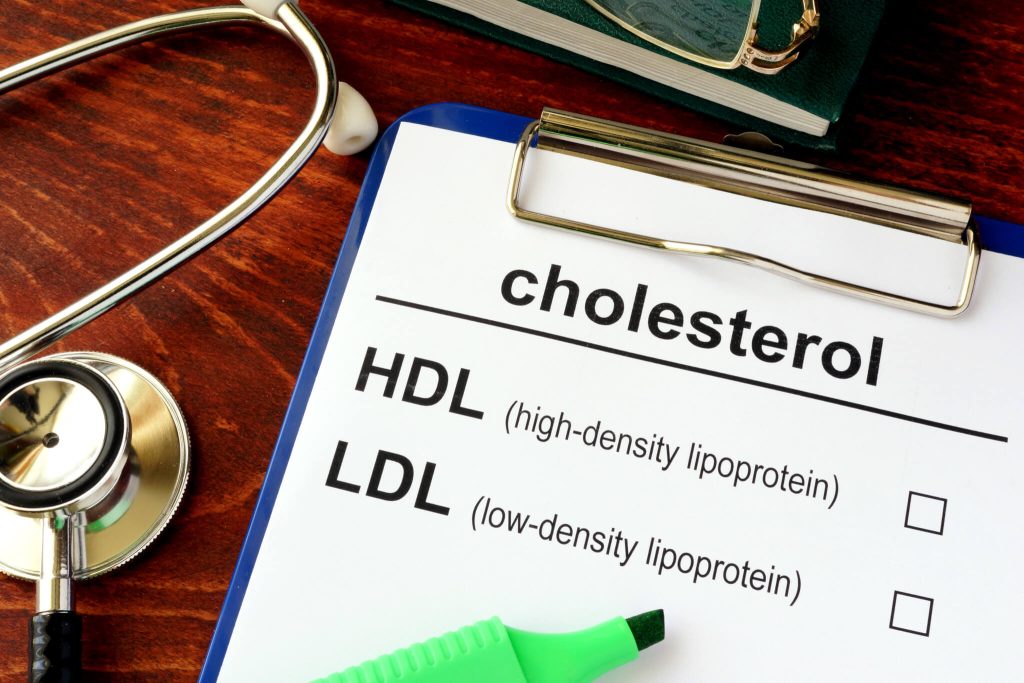

(© designer491 – stock.adobe.com)
GUANGZHOU, China — A new study is turning conventional wisdom about cholesterol on its head. The research shows that high levels of so-called “good cholesterol” might increase the risk of glaucoma, while its traditionally maligned counterparts may actually help protect against this serious eye condition.
Scientists from the Zhongshan Ophthalmic Center at Sun Yat-sen University in China, followed more than 400,000 U.K. adults for over 14 years for the study. They discovered that higher levels of high-density lipoprotein (HDL) cholesterol – long praised for its heart-health benefits – are linked to a greater chance of developing glaucoma, a leading cause of irreversible blindness worldwide. This finding challenges decades of medical understanding about the role of different types of cholesterol in our bodies.
How cholesterol impacts glaucoma risk
Glaucoma affects millions globally and occurs when the optic nerve, which connects the eye to the brain, becomes damaged. By 2040, doctors expect around 112 million people will have this condition. While high pressure inside the eye remains the main risk factor for glaucoma, scientists have long wondered whether other bodily processes, including how we process fats in our blood, might affect who gets the disease.
The research team found that for each standard increase in HDL cholesterol levels, a person’s risk of developing glaucoma rose by 5%. This connection was especially strong in men over age 55.
Even more surprising, the study found that higher levels of low-density lipoprotein (LDL) cholesterol, total cholesterol, and triglycerides – typically considered less healthy forms of blood fats – were associated with a lower risk of developing glaucoma. This completely contradicts the traditional medical view of these substances. However, genetic analysis did not confirm a direct protective effect of these lipids, suggesting the associations may be influenced by other factors.


Blood lipids, which include various forms of cholesterol and other fats, play essential roles in our bodies. HDL has earned its “good cholesterol” nickname because it helps remove other forms of cholesterol from our bloodstream, while LDL has been labeled “bad cholesterol” because it can build up in artery walls. However, this new research suggests these labels might be oversimplified when it comes to eye health.
The study’s size and length make its findings particularly powerful. While previous research typically looked at cholesterol and eye health at a single point in time, this investigation tracked participants for an average of 14.44 years, providing a much clearer picture of how blood fat levels influence glaucoma risk over time.
Age, sex, and genetic factors
Beyond just observing cholesterol levels, the researchers also examined genetic factors. They used sophisticated analysis of genetic markers that influence cholesterol levels, finding that people genetically predisposed to higher HDL levels also faced an increased risk of glaucoma. This genetic evidence strengthens the case for a real connection between HDL and glaucoma risk.
Age also emerged as a crucial factor in these relationships. The links between blood fats and glaucoma only appeared in people over 55 years old, suggesting that age-related changes might affect how cholesterol influences eye health. The research team also found interesting differences between men and women. In older participants, high HDL levels increased glaucoma risk only in men, while lower levels of LDL and total cholesterol showed protective effects only in women.
Different types of glaucoma also showed varying relationships with blood fats. Lower triglyceride levels were linked specifically to primary open-angle glaucoma, the most common form of the disease. Meanwhile, HDL showed connections to both main types of glaucoma studied.
Changing the cholesterol narrative
These findings raise important questions about how we think about cholesterol’s role in health and disease. While HDL cholesterol remains important for heart health, its relationship with eye disease appears more complicated than previously thought. The results suggest that doctors might need to consider both age and sex when evaluating a patient’s cholesterol levels and their risk for eye disease.
The study, published in the British Journal of Ophthalmology, also highlights how complex biological systems can have unexpected effects in different parts of the body. What’s good for the heart might not always be good for the eyes, and vice versa. This understanding could lead to more personalized approaches to preventing and treating glaucoma, taking into account a patient’s age, sex, and complete cholesterol profile.
Paper Summary
Methodology
The research team used data from the UK Biobank, a large-scale health database containing detailed medical information from over half a million UK residents. They focused on 400,229 participants who didn’t have glaucoma when the study began and followed them for an average of 14.44 years. Blood samples provided measurements of different types of cholesterol and other blood fats. The team identified glaucoma cases through both self-reported information and hospital records.
Results
During the study period, 6,868 participants developed glaucoma. The analysis showed that each standard increase in HDL cholesterol levels was linked to a 5% higher risk of glaucoma. Conversely, higher levels of LDL cholesterol, total cholesterol, and triglycerides were associated with lower glaucoma risk. These patterns held true even after accounting for various factors like age, sex, ethnicity, and other health conditions.
Limitations
The researchers noted several limitations in their work. They only collected blood samples once, and participants weren’t fasting when samples were taken, which might not give a complete picture of typical cholesterol levels. The study relied partly on hospital records and self-reported diagnoses, meaning some glaucoma cases might have been missed. Also, since most participants were of European descent, the findings might not apply equally to other ethnic groups.
Discussion and Takeaways
These findings challenge our traditional understanding of “good” and “bad” cholesterol, suggesting that these relationships are more complex than previously believed. The results could influence how doctors approach glaucoma prevention and treatment, especially in older adults with different cholesterol profiles.
Funding and Disclosures
The study received funding from various Chinese research institutions, including the Guangzhou Basic Research Program and the National Natural Science Foundation of China. The researchers declared no competing interests.
Publication Information
This research appeared in the British Journal of Ophthalmology on February 5, 2025 (Ma Y, et al. Br J Ophthalmol 2025;0:1–9. doi:10.1136/bjo-2024-326062).








